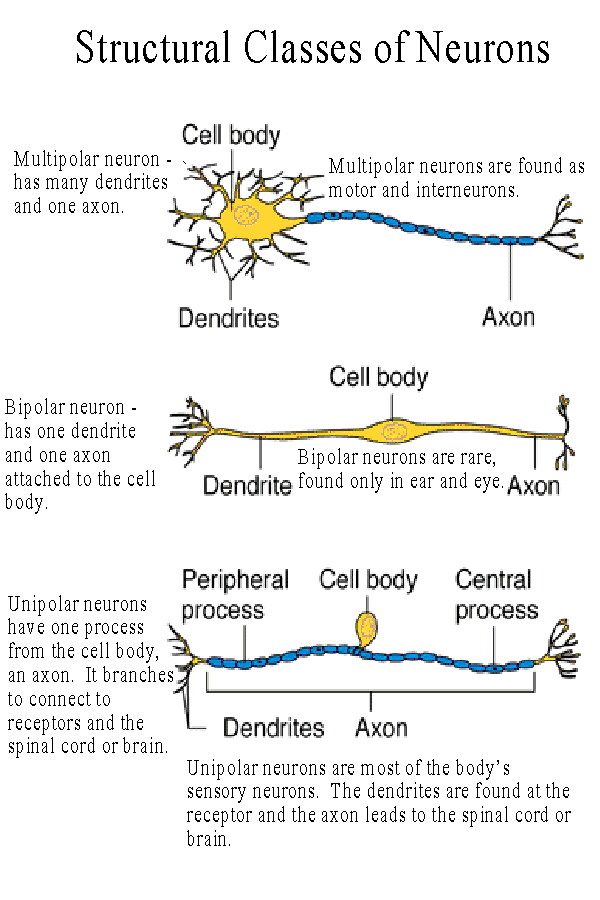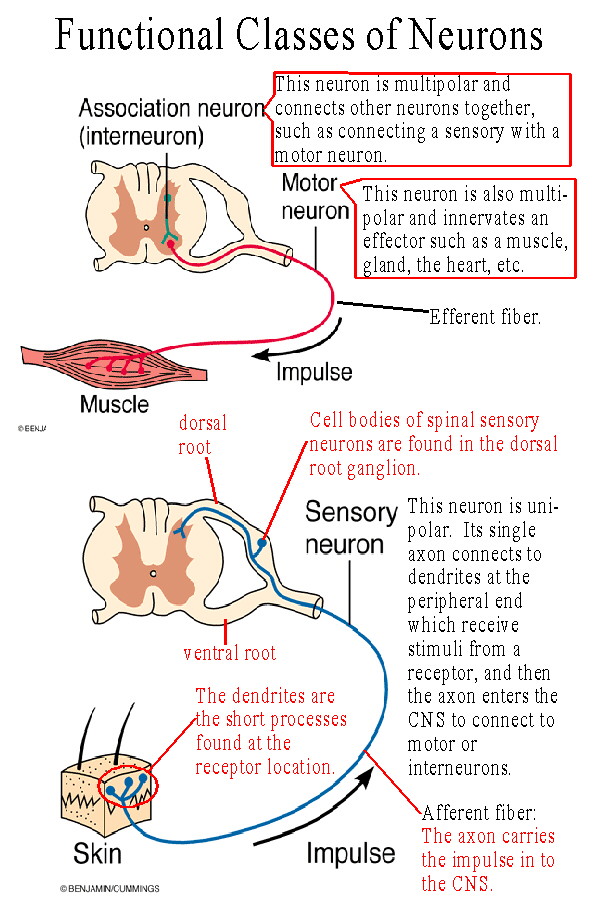The Structure of a Neuron
1 Neurons
a.
have specialized cell structures that enable
them to transmit nerve impulse.
b.
Have different types but all have 4 common
features:
i. Dentrites
1.
short, branching terminals that receive nerve
impulses from other neurons and relay the impulse to the cell body.
2.
Numerous and highly branched
ii. Cell
body
1.
contains nucleus and site of cell’s metabolic
reactions
2.
processes input from the dendrites
3.
if input is large, CB relays to axon
iii. Axon
1.
Conducts impulses away from the cell body
2.
Different lengths
iv. Branching
ends
1.
Branches into many fibers
2.
Communicate with adjacent neurons, glands,
muscles by releasing chemical signals into the space between it and the
receptors.
c.
Some neurons- myelin sheath
i. Fatty
insulating layer
ii. Gives
axons a glistening white appearance
iii. Protects
neurons and speeds the rate of nerve impulse transmission
iv. Composed
of Schwann cells
Classifying Neurons
I.
Three types of neurons (Structure)
a.
Multipolar
i. Several
dendrites, single axon, found in brain and spinal cord
b.
Bipolar
i. Single
dendrite, single axon, found in inner ear, retina, olfactory are of brain
c.
Unipolar
i. Singles
process that extends from the cell body, dendrite and axon are fused, found in
peripheral nervous system
II.
Three types of neurons (function)
a.
Sensory neurons (Sensory input)
i. Receive
stimuli(ex. Skin) and nerve impulse
ii. Transmits
impulses to central nervous system
b.
Interneurons
i. Found
within central nervous system
ii. Link
between sensory and motor
iii. Process
and integrate incoming sensory information
c.
Motor neurons
i. Transmit
information from the central nervous system to effectors (Ex.Muscles, glands,
and other organs that respond to impulses from motor neurons)
Sensory input(collect information) > Integration >
Motor output (effectors)
The Reflex Arc
I.
Reflexes- sudden, involuntary responses to
stimuli (ex. Blinking, vomiting, jerking hand from hot object)
II.
Reflex arcs
a.
simple connections of neurons that explain
reflexive behaviours.
b.
Usually involve three neurons
c.
Can be very rapid(Example, pressure of cactus
needle)


